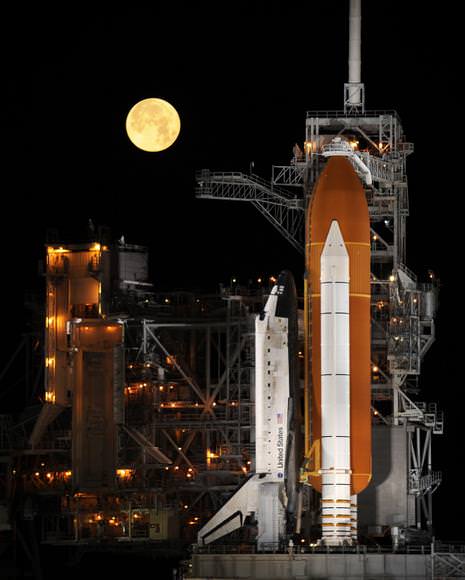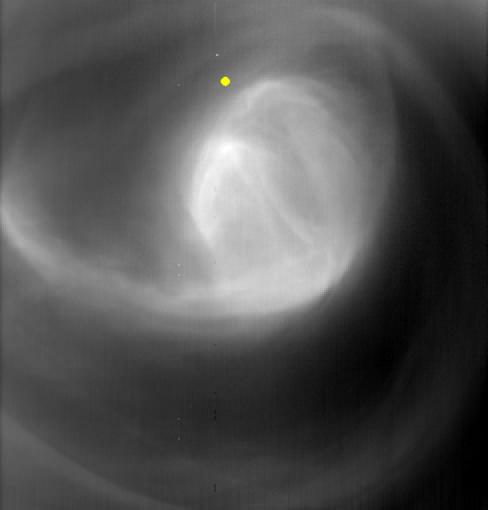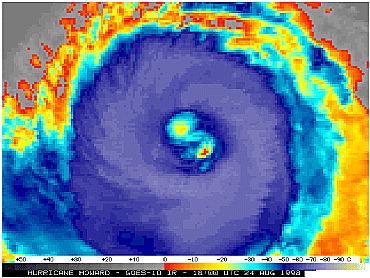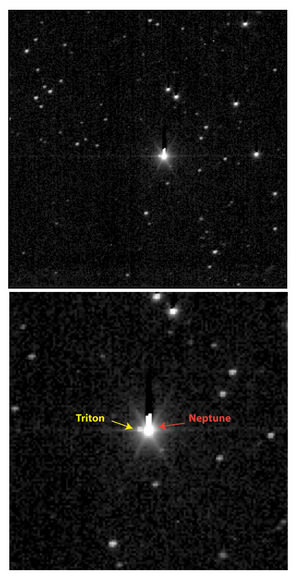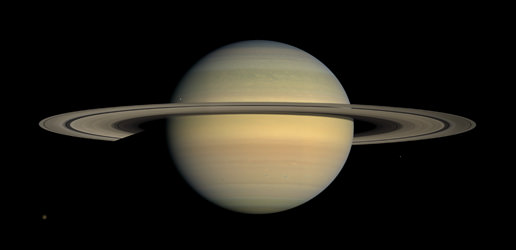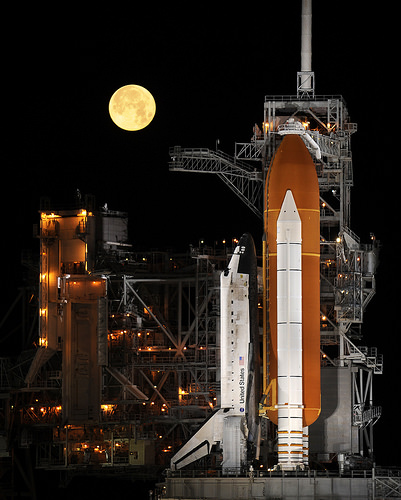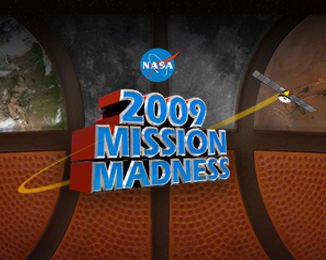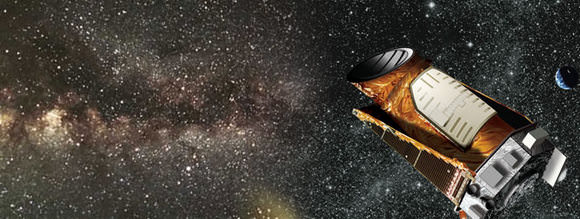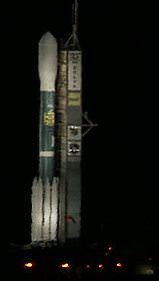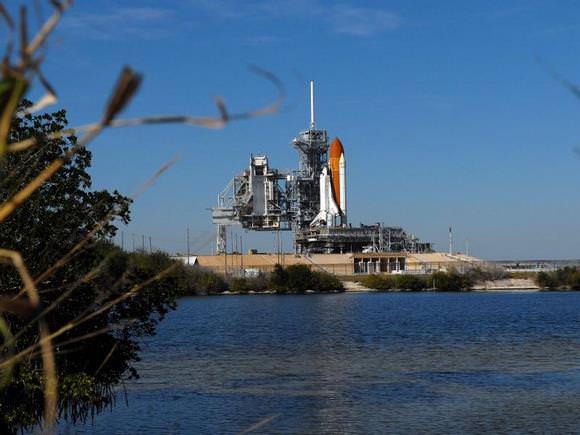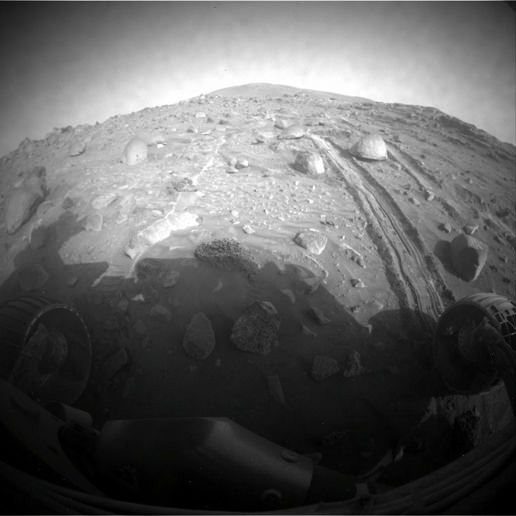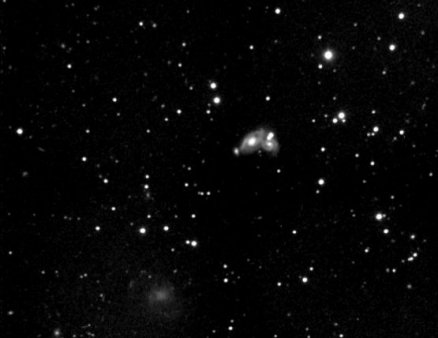[/caption]
With just over four hours to go before launch, NASA is 80 percent optimistic that tonight’s Discovery launch will be a go — with the weather holding the only foreseeable wild card. Launch time is 7:43 p.m. local time (EDT) from the Cape Canaveral Air Force Station.
Unfortunately for east coast skywatchers, a storm system that’s been dumping rain all weekend will obstruct a view of the launch that would otherwise be a beauty, as the shuttle will cruise northeast over the ocean nearly parallel to the shore. Without the clouds, the launch would have been visible as far west as the Appalachian Mountains, and as far north as the southern tip of Nova Scotia.
But Florida’s weather is looking promising, partly cloudy (and 80 degrees at the time of this post) with an 80 percent chance of cooperating with the launch.
7:20 p.m. (EDT) update: With less than a half hour to go, daylight is fading under clear skies in Florida. Earlier, the weather forecast improved from 80 percent to 100 percent favorable for launch. NASA is reporting no problems.
The Discovery crew members are set to fly a new truss segment to the International Space Station and install the final set of power-generating solar arrays, boosting the station’s power capacity and paving the way for doubling the size of the ISS crew from three to six.
The Discovery crew has been bouncing between NASA’s Kennedy Space Center, in Florida, and the Johnson Space Center in Houston since late January; the first launch attempt was scheduled for early February. But four times, managers rescheduled the launch based on their concern following a hydrogen control valve malfunction on the shuttle Endeavour last fall. They wanted to rule out any similar glitches on Discovery.
Things were looking good for the fifth attempt on Wednesday — when skies would have been clear across much of the east coast — but a leak during refueling sent up another red flag.
Understandably, this morning’s fueling was a bit tense. But for three hours beginning at 10:20 EDT, nearly 500,000 gallons of chilled liquid oxygen and hydrogen propellants flowed into Discovery’s external tank without incident.
Two irregularities have been reported so far this afternoon: a bat was found clinging to Discovery’s external tank, and Launch Director Mike Leinbach sent a “red team” to launch pad 39A to manually correct a valve issue that caused a drop in helium pressure.
Neither issue is expected to interfere with launch.
Stay tuned for updates, either to this post or a new one.
LEAD IMAGE CAPTION: NASA’s Discovery shuttle pictured under a full moon on Wednesday, when its fifth launch attempt was scrapped. Tonight marks the sixth. NASA/Bill Ingalls
Source: NASA

